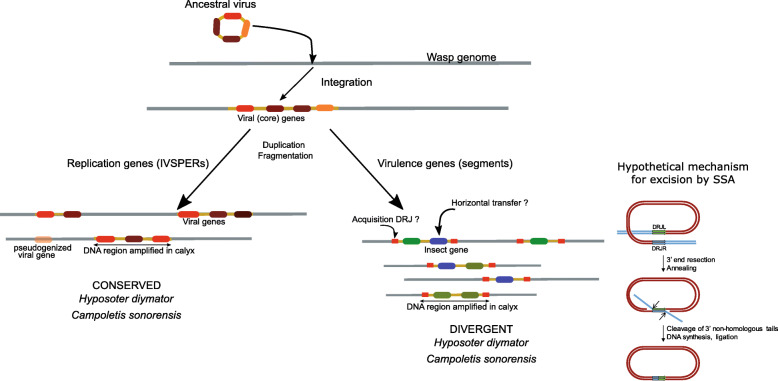Fig. 5.
Steps of virus domestication in ichneumonids. Following integration of an ancestral virus genome in a wasp chromosome, the viral sequences were maintained but underwent significant modifications over evolutionary time. The viral sequences including genes necessary to produce particles (IVSPERs) were conserved through evolution, although they have undergone fragmentation and gene duplications and have lost some genes, including the viral DNA polymerase. The encapsidated sequences (proviral segments) include virulence genes involved in promoting parasitism. Ichnovirus segments likely derive from ancestral viral sequences that have acquired virulence genes from the wasp. Both proviral segments and IVSPERs are amplified in the replicative tissue in a coordinated manner suggesting regulation by a common mechanism and that they may both derive from the ancestral virus. Following amplification, viral segments are excised via homologous recombination or single-strand annealing mechanism (depicted) involving the direct repeated junctions

